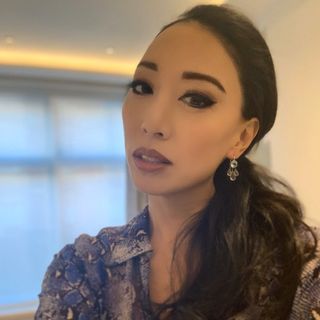Equipment
My ultimate kitchen necessities. Korean cooking has never been easier!
Click/tap on an image to see a larger version.
Blender

Blenders are not essential; however, a handheld blender can be useful when making marinades, mashing mung beans for pancakes, and for blitzing soy beans for soups.
Cast Iron Pot

A cast iron pot is great for braising as it locks in moisture and retains heat evenly. It’s the perfect tool for making Korean hot pots, stews and soups. Keep it on a low heat to prevent food from catching.
Ceramic Bowl (Ttukbaegi)

These Korean earthenware bowls are designed for cooking and/or serving stews and soups as they are excellent heat retainers. Traditionally, Ttukbaegi arrives at the table bubbling and steaming.
Chopsticks
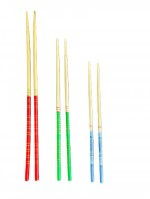
Chopsticks are great utensils for eating with, and for cooking. Cooking chopsticks are longer and usually made from a material low in temperature conduction, such as bamboo. Of course, they are not vital when cooking Korean food, but chopsticks can be useful when dealing with items that need precise turning, such as dumplings.
Colander

A large colander or strainer is useful for rinsing and washing large portions of vegetables, including cabbage leaves when making Kimchi; and straining noodles.
Food Processor

This is a fundamental item in any Korean kitchen because it saves so much time! Korean cooking involves a lot of chopping, grating, slicing and mincing, and so a decent quality food processor is a valuable piece of kit, and great for making kimchi paste.
Gloves

Korean cooking is very hands on. To create this soul food, one is required to get their hands dirty and connect with the ingredients. Sense of touch is just as important as smelling, seeing and tasting when preparing food in Korea. Gloves are not mandatory, but come in handy when dealing with chillies, raw meats and fish, and making kimchi.
Griddle Pan

While not essential, griddle pans are sometimes fun to use as they leave meats, fish and vegetables with beautifully charred lines and a smoky aroma. They are also a great alternative to gas or charcoal grills when preparing a Korean style barbecue.
Hotteok Press

Hottoek is a sweet donut-like pancake that is usually filled with sugar and cinnamon. This crispy delicacy is a sought-after Korean street-food snack. Because they are so popular and widely made at home, Koreans have a special tool to help create the perfect shaped pancake.
Large Cast Iron Pan

Cast iron pans are preferable than non-stick pans because they last longer, are not easily scratched, and overall sturdier. They are also excellent heat retainers and so work well for stir-fries.
Mandolin Slicer

Having a mandolin slicer is always convenient. There are many dishes in Korean cuisine that require thinly sliced vegetables for salads and pickling. A mandolin slicer will win the battle of consistency over a knife any day.
Measuring Spoons
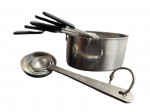
Measuring spoons allow for accuracy. They are useful when following Korean recipes due to the large number of different ingredients spices used.
Microplane

Microplane is a brand, and any grater is better than no grater! Microplanes tend to have extremely sharp blades, and so are superior. It is useful to have a Microplane to mince garlic, grate ginger, and zest limes.
Mixing Bowls
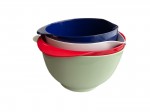
Mixing bowls are imperative in any cuisine, but especially in Korean cuisine due to the large volume and array of ingredients used. Having an assortment of various sizes will always be useful.
Onggi

Onggi is a Korean earthenware widely used to store fermented foods including kimchi, gochujang and doenjang. Its microporous clay walls draw in oxygen and push out impurities, aiding the fermentation process.
Peelers

Having a good vegetable peeler makes life a lot easier. Peelers are great kitchen utensils and are used a lot in Korean cooking, whether for peeling daikon or carrots, or Asian pears, you will use a good sharp peeler often.
Rice bowls
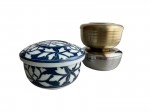
Koreans like to serve rice in bowls with lids to keep the rice warm. They are the perfect size to cradle a portion of freshly steamed rice.
Rice Cooker

Rice is a staple in Korea and so every household will have a rice cooker to guarantee perfectly plump and fluffy rice every time. Nowadays, rice cookers are also pressure cookers that can make juk (congee) and various other dishes too. They are worth the investment.
Rice rolling mats
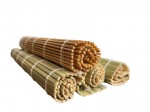
These bamboo mats are an essential tool to make easy and quick kimbap rice rolls. They can also be used for shaping other soft foods such as omelettes.
Scale

A kitchen scale eliminates the need for a clutter of various measuring cups. Top tip: milligrams (ml) are equal to grams (g) when measuring certain liquids like water. So, 250 ml of water can be measured as 250g on a scale.
Scallion cutter

This simple yet swanky tool is used for shredding scallions/spring onions. It is inexpensive, and allows home cooks to easily produce restaurant quality scallion wisps for salads and garnishes.
Scissors
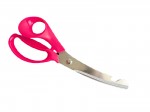
A sharp pair of scissors is of course essential. Koreans use them to cut just about everything, from meat and fish to Kimchi and vegetables.
Sharp Knives
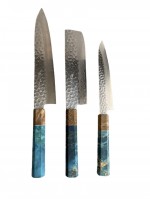
A blunt, cheap knife is not only difficult to work with, but can also be seriously dangerous. Investing in a good set of knives will turn chopping from a chore to a joy.
Skewers
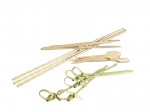
Many Korean street-food delicacies involve skewering. From meat to seafood to rice cakes, having a bag of skewers at home is always useful, especially when hosting a Korean barbeque.
Spatula

Of course, a spatula is a must-have kitchen utensil. It especially comes in handy when flipping jeon (Korean pancakes) and Hottoek (Korean sweet pancakes).
Stock Strainer/Infusers

Korean stock strainers look and work similar to tea strainers. They usually comprise a stainless-steel basket which clasps together to hold herbs, dried anchovies, kelp, and other ingredients needed to flavour stock. After the flavour has boiled out, the contents of the strainer will be bitter and so are discarded.
Steamers

There are many types of steamers that one can use for Korean cooking. It boils down to personal preference. Bamboo and stainless-steel steamers are great for dumplings, buns and vegetables, although stainless-steel steamers are usually easier to clean.
Stone Bowl (Dolsot)

A Korean Dolsot is a granite stone bowl used for serving an array of hot dishes, including bap (rice) bibimbap (Korean mixed rice) and various stews and soups. Dolsots are brilliant heat retainers and so dishes arrive at the table steaming and sizzling.
